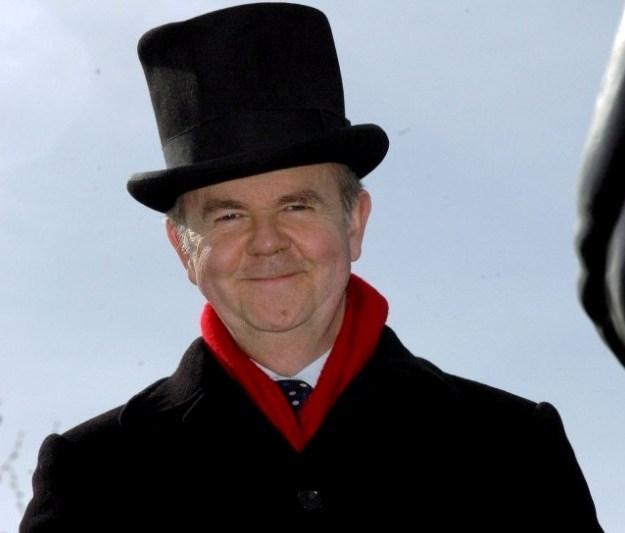There is probably only one thing that Ann Widdecombe and I have ever agreed upon: we both think it might be a really good idea to stick William Wilberforce on the Fourth Plinth. Why not? It’s nice to have contemporary art in Trafalgar Square, of course, but surely there are few other reforming characters as worthy as the great abolitionist? And Wilberforce was many other things besides – though not all of them would necessarily impress the nation to quite the same degree.
In his youth – which here means before the age of 25 when he had already spent a year as a Tory MP in the county of Yorkshire - Wilberforce loved to hang out with the smart set. He loved to dance and to go to the Yorkshire races, and he was apparently a wicked mimic to boot. But in 1784 he had a terrifying premonition: society was about to collapse; social and moral anarchy would prevail. He underwent a Christian evangelical conversion and began to rail against the corruption and profligacy of the times (the 18th century was pretty profligate – just look at the prints of Hogarth).
What brought about this sudden, robust conversion is hardly touched upon in Ian Hislop’s Age of the Do-Gooders, though Wilberforce’s crusade to improve the moral health of the nation – campaigning to improve manners, advocating a clampdown on “swearing, drinking and debauchery”, speaking out against duelling, helping to set up the RSPCA – found great favour among those who feared the advancement of mob rule and the tide of revolutionary fervour that was sweeping France. As history tells us, his campaign for the abolition of slavery had far less universal support among the powers that be than all his other campaigns put together.
For Hislop, Wilberforce is undoubtedly “the godfather of the do-gooders”, inspiring good men and women across Britain to change the nation just one small but significant step at a time (which is, as we know, the thoroughly British way). And so a further five of these singular individuals pop up, most of whom have now been relegated to little more than a footnote in Britain’s social history (my personal favourite: Thomas Wakley, who, aged just 27 in 1823, pricked the festering boil of corruption and cronyism in medicine with a well-aimed lancet, by, well, founding a campaigning medical journal aptly named The Lancet).
But probably the least cuddly among these affectionately named do-gooders was Charles Trevelyan, the man who reformed the civil service by introducing an entrance exam and thereby injecting some brains into public life. This was, indeed, a good job well done, but Trevelyan’s copy book remains forever blotted by his handling of the Irish potato famine. In charge of government relief he did precisely nothing, or very little, to save the millions who perished. It was all, he believed, the Irish people’s own ruddy fault. Charming.
 Hislop is an erudite and entertaining presenter, but he does have a touch of the old fogey about him (though seeking to rescue the 19th-century philanthropist and reformer from contemporary mockery is a jolly good thing). Not so the smoothly articulate Andrew Graham-Dixon. G-D could quite easily, I imagine, wax lyrical on any number of disparate topics – kitchen fittings, unleaded versus super unleaded, you name it – and hold your attention. But on the subject of art he is sublime. And on BBC Four’s The Art of Germany he was, even, doubly sublime. And it’s certainly not just all about style, but content too.
Hislop is an erudite and entertaining presenter, but he does have a touch of the old fogey about him (though seeking to rescue the 19th-century philanthropist and reformer from contemporary mockery is a jolly good thing). Not so the smoothly articulate Andrew Graham-Dixon. G-D could quite easily, I imagine, wax lyrical on any number of disparate topics – kitchen fittings, unleaded versus super unleaded, you name it – and hold your attention. But on the subject of art he is sublime. And on BBC Four’s The Art of Germany he was, even, doubly sublime. And it’s certainly not just all about style, but content too.
Taking us on a journey from the early German Renaissance – that’s mainly Dürer through to the disturbing self-portrait sculptures of Messerschimdt (pictured with presenter above right), the Viennese artist who went mad - there was an awful lot that was thrown into the mix: the politics of the Holy Roman Empire, the Reformation, the 30 Years War (during which, we learned, more than one in three German people lost their lives). And he had a fascinating line of argument about how the tensions and contradictions in German art reveal quite a lot about the German national character: a love of nature versus the machine; a longing for freedom versus a desire for control. He took us to Cologne Cathedral - the largest Gothic church in northern Europe and once the tallest building in the world - which offers, he said, a microcosm of German art: writhing Gothic gargoyles and ghouls next to the most tender and expressive carved oak crucifix, the Gero-Kreuz (commissioned in about 960), and then to the elegantly austere wood carvings of saints, to pick out just a few of its treasures.
So, he's certainly clever, and this was beautifully scripted, but what Graham-Dixon is supremely good at is this: he knows how to tell a story – he knows about narrative drive and pausing and modulating his voice for dramatic effect. All this, without sounding in the least bit hammy, which, as we know, is not half as easy as it sounds. Well, let me say this, Graham-Dixon is a natural at it.
- Watch Ian Hislop's Age of the Do-Gooders on BBC iPlayer
- Watch The Art of Germany on BBC iPlayer















Add comment